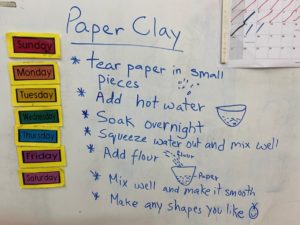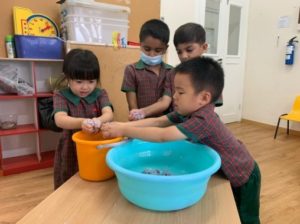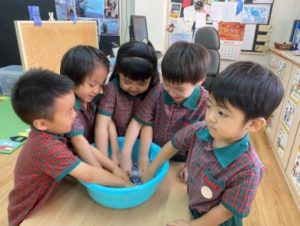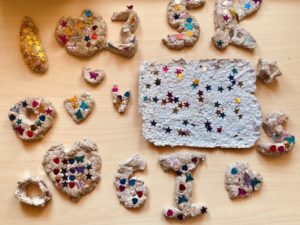This article is about curiosity and the developing understandings of the properties of materials in young learners.

Asmita Sharma primarily focuses on Early Years education and has been a PYP Coordinator for the past 5 years at EtonHouse International Pre-school.
In our early years class our unit of inquiry for the first term was concerned with understanding the properties of materials, and how people use them. This unit was introduced to the class for the children to develop a variety of skills, constructing knowledge by interacting, experimenting and exploring the properties of materials around them and to use this knowledge as a medium to create and express themselves.
The Paper Clay Project that the children engaged in was an inquiry born together with students after discussions on sources and uses of different kinds of paper. The learners as a whole group expressed their desire to make their own paper clay after they watched a video on paper clay making and decided to make their own recycled paper clay.
We started collecting recycling paper and tearing it into smaller pieces. Once we had collected enough paper, we reviewed the process by watching the video again. We soaked the paper in hot water overnight and while soaking the paper, children were able to hypothesize and make predications. They predicted that the paper will become soft in the water. This also provided an opportunity for them to participate in developing shared understanding and responding to and asking questions. Some of their questions were; Why does the paper become like juice in hot water? How long will it take for the paper to dry? They were able to answer the follow up probes – what do you think will happen if water is not added in to the paper?
Itaru: “If we don’t add water, we cannot make clay because it will not stick.”
We came back the next day to see that their hypothesis was right as the paper had already become soft.
The next step included draining the excess water out and then mashing it up into a pulp in small groups. They were able to distinguish the form (what is it like?) of paper when it was dry (hard) and wet (drippy and soft).
Manu: “The paper has become soft and sticky now.”
Children had a lot of fun doing this. Once the pulp was ready, we added flour and some salt to it and started folding it into smooth dough. They were able to express the changes (what is happening?).
Norah:”It is getting thick and dry when we add flour.”
Once the clay was ready, the children were invited to create shapes they were interested in. Now that they were familiar with the basic process of paper clay making, they decided to experiment to make their clay prettier by adding glitter to it.
It was overall a stimulating learning experience for the children as they demonstrated their curiosity and understandings of the properties of materials. They understood the concept of change by observing the changes in property of paper from dry & hard to soft and sticky. Upon reflection they were also able to appreciate the value of recycling paper and are taking action daily to avoid wastage of paper. Kudos to the children’s creativity.
Asmita Sharma has taught various curriculums in schools in India and Singapore for the past 15 years. Currently, she primarily focuses on Early Years education and has been a PYP Coordinator for the past 5 years at EtonHouse International Pre-school. She supports her students’ learning by encouraging active participation and engagement, giving them ownership over their learning.




Nice idea! loved the anecdotes.